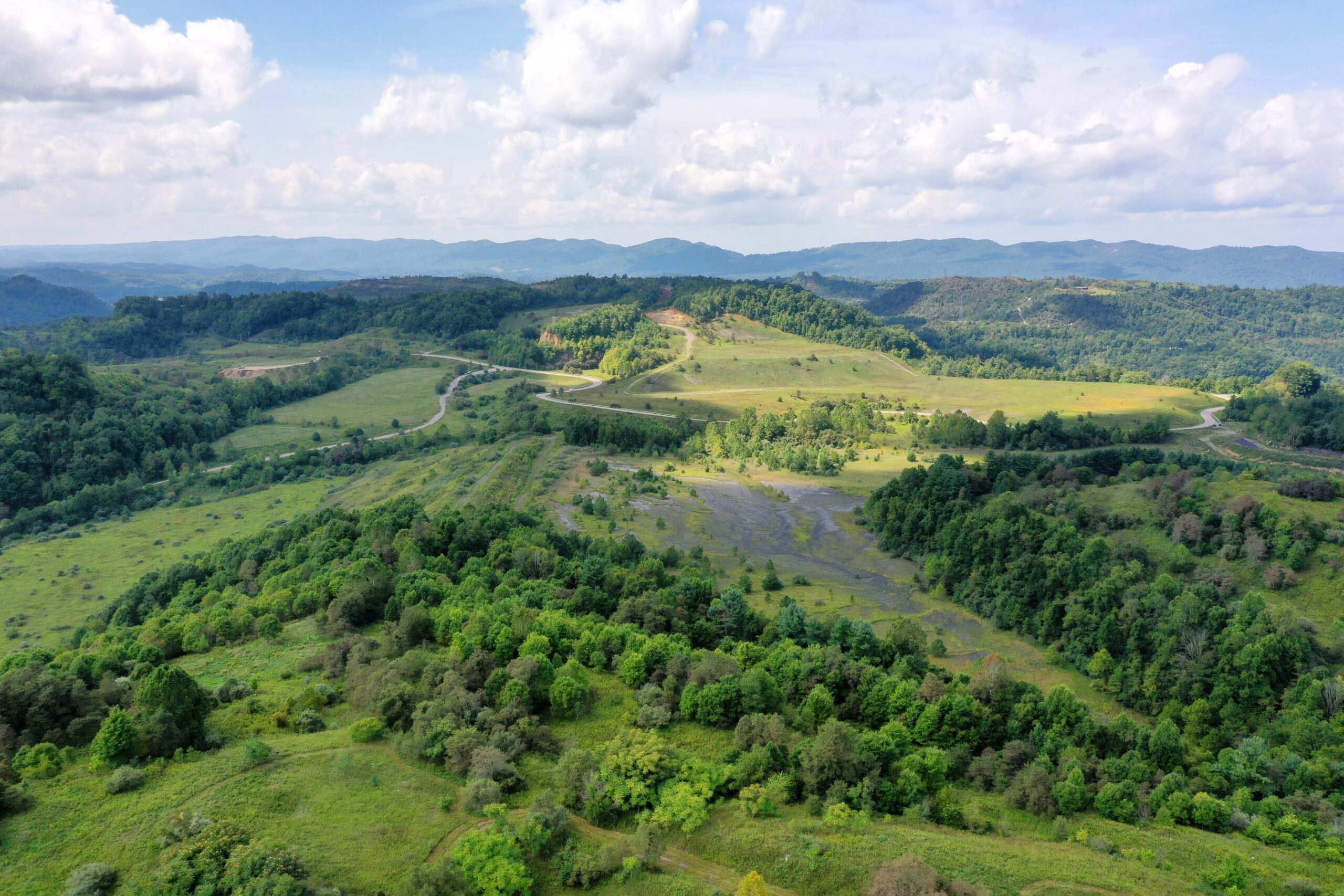The Nature Conservancy of Virginia (TNC) and Dominion Energy have announced a plan to install solar panels across 1,200 acres of a depleted surface coal mine along the state’s southwestern border. The effort, titled the Highlands Solar project, will have the capacity to power 12,500 homes at peak output.
Dominion Energy will be overseeing the technical components of the project. A Richmond, VA-based power utility company operating in both Virginia and North Carolina, Dominion has made a name in the clean energy space for renewable initiatives, including offshore wind projects. The Nature Conservancy of Virginia will be responsible for environmental impact reporting, project management, and integration with ongoing initiatives.
The land, which was once the Red Onion Mine, sits in central Appalachia. It is one of the premier collaborations between a utility company and a 501(c)(3) of this scale.
However, it is not the first example of a coal mine being transformed into a solar farm. In part, transformations (which have primarily happened in the past three years) are due to Virginia’s new energy law, the Virginia Clean Economy Act, which took effect in July 2020 and requires the state to be 100% clean energy-based by 2045. Utilities and energy providers, like Dominion, who fail to meet the requirement are subject to fines. As a result, collaboration efforts like this have sprung up around the state, including the Wise County solar farm in 2019 that received significant media attention. Other projects are underway in West Virginia, where a broad campaign called “Mining the Sun” was launched to revitalize the economic impact of disturbed lands that are unsuitable for habitation and depleted of coal.
Appalachia was once a robust mining hub, but the region’s prized industry has faltered between depleting natural resources and environmental and energy policy changes, hurting job prospects for area miners in the process. The Virginia Clean Economy Act has helped establish newly-created transition programs for displaced workers – training programs for new, clean energy employees who can learn to carry over their technical skills from the traditional energy industry to the emerging renewable alternative. This project has the potential to bring those jobs to the surrounding regions of the Red Onion Mine.

“It’s […] another major step toward building a 100 percent clean energy economy in Virginia,” said Ed Baine, President of Dominion Energy. The executive went on to add that “…repurposing former coal mines for solar is a smart way to enhance the region’s economy and bring renewables to Southwest Virginia.”
The ambitious energy project will exist within the larger geographic context of The Nature Conservancy of Virginia’s other headline effort: The Cumberland Forest Project. The latter is a massive conservation effort across the Virginia, Tennessee, and Kentucky border, salvaging 253,000 acres of forestry capable of storing millions of tons of carbon. The region also serves to protect an essential migratory corridor – or escape route, as dubbed by environmentalists — for plant and animal species moving to cooler climates.
The Highlands Solar project is one of a handful of multi-thousand acre surface mines in the Cumberland Forest Project domain with the potential to offer economic benefits and energy expansion.
“Some of the region’s former mined lands are well suited for solar development and by directing development towards these areas it will help us conserve the region’s intact forests for wood products, carbon storage, wildlife habitats, outdoor recreation and tourism,” Brad Kreps, Director of The Nature Conservancy’s Clinch Valley Program commented.
Kreps is optimistic about the example TNC and Dominion’s joint efforts can set nationwide. He went on to say that “by collaborating with Dominion Energy and other companies on these initial projects, we hope to develop a model that can be replicated in other coal mining regions across the U.S.”





